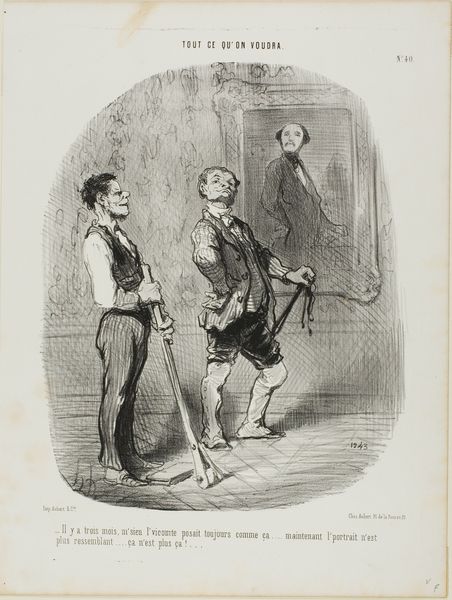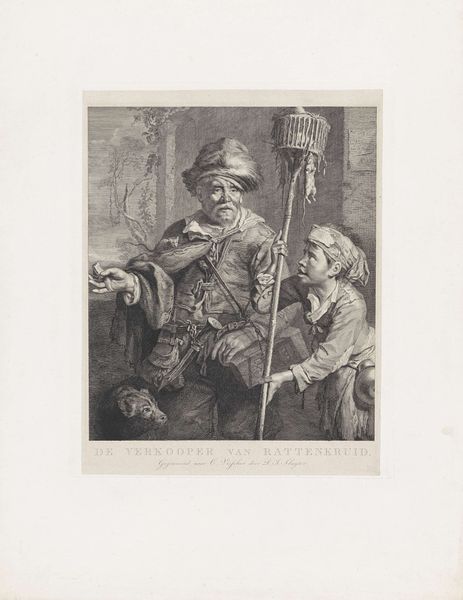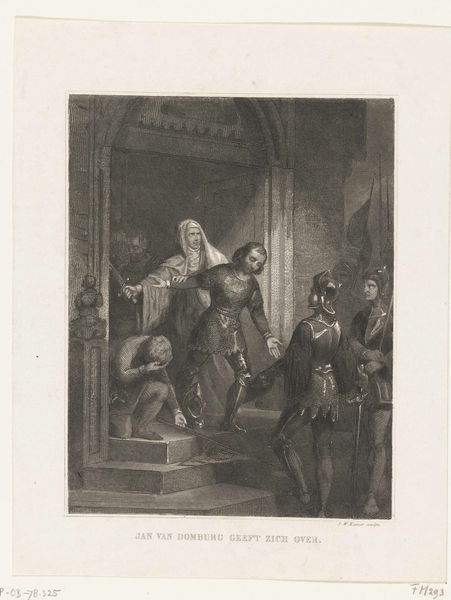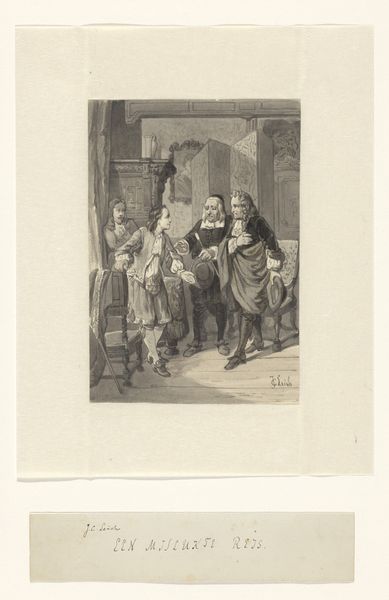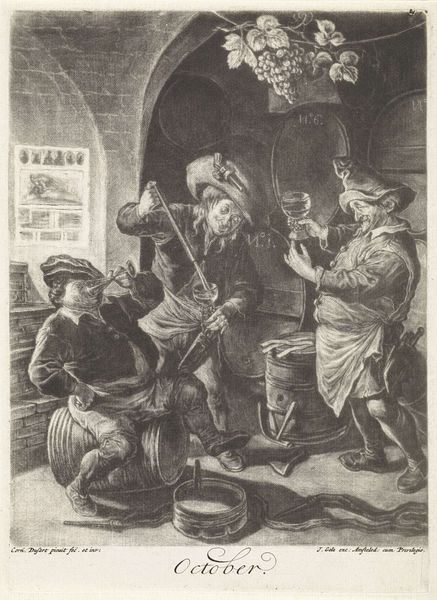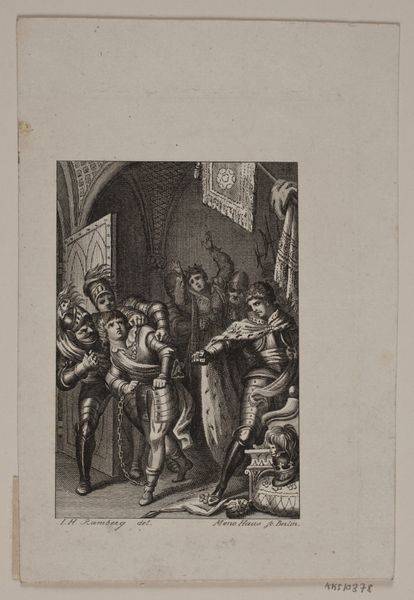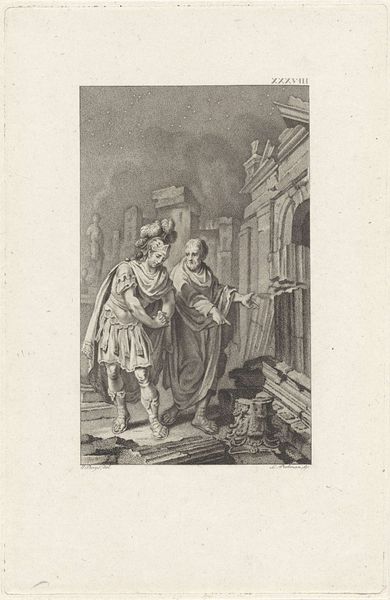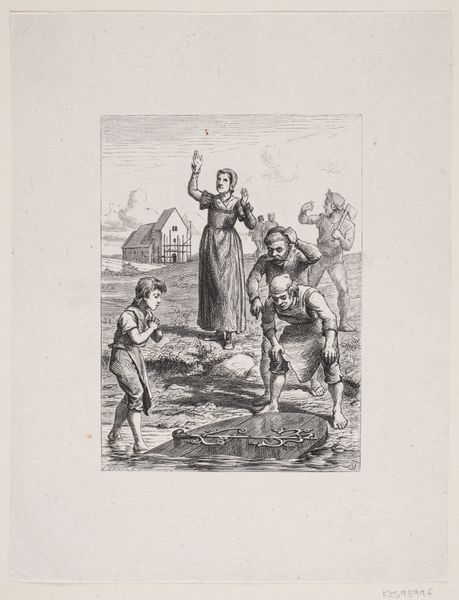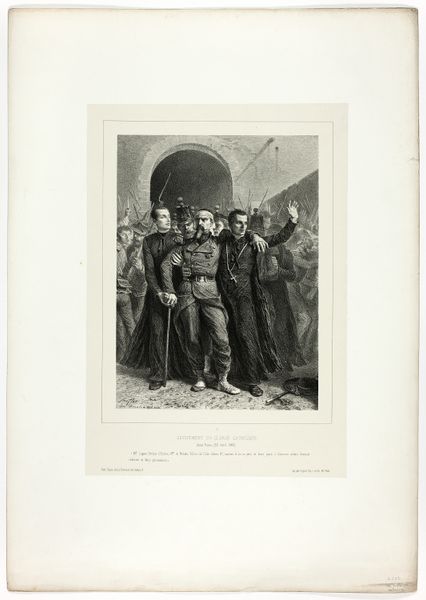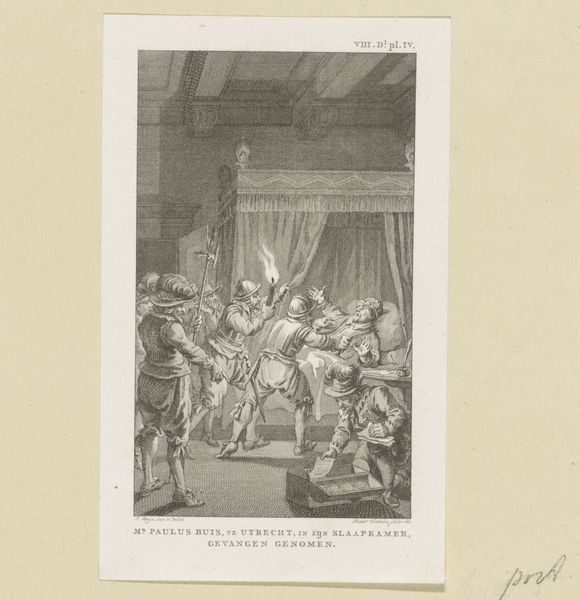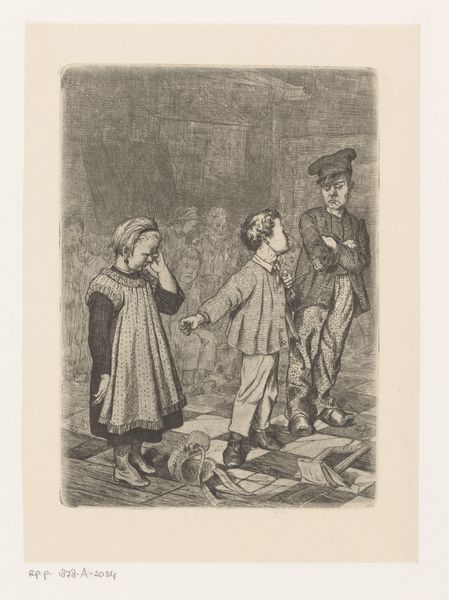
print, engraving
#
narrative-art
# print
#
history-painting
#
engraving
Dimensions: 174 mm (height) x 107 mm (width) (billedmaal)
Editor: This engraving, “Tordenskjold i Marstrand,” by F. Hendriksen, probably dating from between 1847 and 1938, depicts a historical scene with several figures looking up at a man in a window. The detail achieved with simple engraving is striking. How do we interpret the historical context through the materiality of printmaking? Curator: This work provides fertile ground for a materialist reading. Look at the method of its production, printmaking, as a form of reproductive technology making historical narratives accessible to a wider public through mass distribution. Note that engraving as a medium dictates precision. Editor: It's interesting that a technique involving precise, reproducible labor is used to depict what I presume is a heroic moment of Danish history. Curator: Exactly. And who was this print intended for? Was it meant to cultivate patriotism? Consider that this accessibility creates a market for national narratives, embedding ideology into everyday consumption. How does this print function as a commodity *and* a conveyer of historical meaning? What kind of labor was needed to create this engraving? How would that influence its consumption and its social impact? Editor: So, by understanding the materials and processes, we're uncovering how history becomes a tangible product shaping national identity. The very act of reproduction transforms the historical narrative itself! I never considered the print market for these stories. Curator: Precisely. Reflecting on the piece, examining the means of its production offers unique perspectives into how the print functions as a commodity and a cultural artifact simultaneously, doesn't it? Editor: Definitely. It is fascinating how focusing on the materials broadens the perspective beyond the obvious historical narrative.
Comments
No comments
Be the first to comment and join the conversation on the ultimate creative platform.
